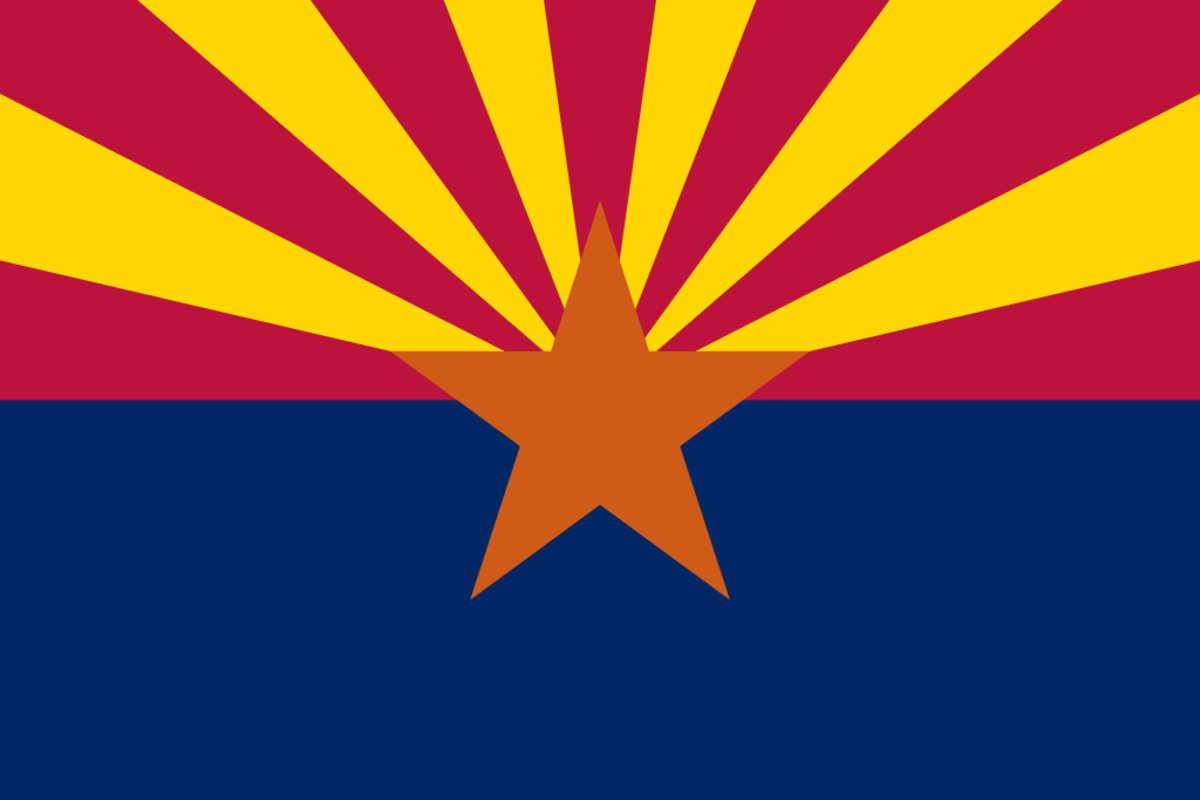Arizona Motorcycle Laws

Arizona has some of the highest motorcycle accident rates in the United States, with hundreds of riders killed or injured every year. According to the Arizona Department of Transportation (ADOT), there were 2,594 motorcycle crashes in 2021 alone. These resulted in 2,206 injured victims and 160 fatalities.
Many of these happened on the state’s deadliest roads for motorcycle riders, including State Route 101, Interstate 10, and Interstate 17. Additionally, the counties of Maricopa and Pima proved to be very dangerous, with around 70% of motorcycle-related fatalities occurring in their jurisdictions. Busy zones, lengthy roadways, sharp inclines, and unseen turns make these locations notably difficult for motorcyclists, with accidents often being serious or deadly.
The importance of Arizona's motorcycle rules in advancing rider safety and decreasing incidents and fatalities cannot be overstated. By adhering to the law, motorcyclists can experience the excitement of the ride, while also mitigating the potential dangers and fatal outcomes.
Arizona Motorcycle Driver’s License
To legally operate a motorcycle in Arizona, riders must have a valid motorcycle endorsement or a class M designation on their driver's license or a separate motorcycle license.
To obtain a motorcycle endorsement, one must have a valid Arizona driver's license and pass the written and road skills tests. Meanwhile, those at least 15 years and six months old may be issued a motorcycle instruction permit, which gives limited privileges compared to a motorcycle endorsement.
Motorcycle endorsement applicants under the age of 18 are required to receive a motorcycle driver education program from training schools approved by the Motor Vehicle Division. It involves hands-on training and safety education on topics such as basic motorcycle operation, braking techniques, and defensive riding strategies. After completing the rider education course, one must pass a written exam and a road skills test to obtain a motorcycle endorsement. For applicants aged 18 and above, the course is still recommended but not mandatory.
Following these steps and requirements can help ensure that riders are properly trained and licensed to operate a motorcycle, promoting safer riding practices and reducing the risks of accidents.
Arizona Motorcycle Helmet Law
In 2021, motorcycle crashes in Arizona resulted in 12.09% of deaths and 26.37% of serious injuries from motorcycle crashes involving unhelmeted riders. According to Arizona's motorcycle helmet law, whenever a motorcycle is moving, all riders and passengers under the age of 18 must wear helmets that meet the Department of Transportation's standards for safety. However, helmets are optional for those aged 18 and above.
Additionally, all motorcycle riders must wear approved goggles, safety glasses, or a transparent face shield unless their motorcycle has a protective windshield. Using a helmet in line with state safety standards enhances riders' protection during accidents.
Arizona Equipment on Motorcycles Law
Arizona requires motorcycles to be equipped with specific safety features and meet certain standards for operation on the road and accident prevention.
One of the most important requirements for these motor vehicles involves the use of headlamps; a motorcycle should have at least one headlamp illuminated at all times while it is in motion. This requirement helps ensure that motorcycles are visible to other drivers on the road, especially during times of low visibility.
Motorcycles should also have secure seats for both the driver and passenger to ensure that riders can maintain proper control of their vehicles and reduce the risk of accidents caused by unstable or improperly positioned riders.
Arizona law addresses the issue of noise and exhaust levels by setting standards for the maximum noise levels that motorcycles can produce and requiring them to be equipped with properly functioning mufflers.
Moreover, motorcycles are required to be equipped with a rear-view mirror in such a way that the driver can see vehicles and other hazards behind them while operating the motorcycle.
Arizona Motorcycle Hands Off Law
Arizona's Hands Off Law aims to reduce the number of accidents caused by distracted driving. It prohibits drivers of motor vehicles from holding or supporting any electronic device—including smartphones, tablets, and other portable electronic devices—with their hands while driving.
It is also illegal to read or send text messages, make phone calls, or use any other functions that require the use of a device. However, it is allowed to use an electronic device in hands-free mode, for GPS, or for emergency calls.
Violating the law can result in fines between $75 and $149 for the first offense and up to $250 for subsequent offenses. If a violation causes serious injury or death, the driver may face a criminal penalty amounting to $2,500 and up to six months in jail.
Arizona Motorcycle DUI Law
Arizona's Driving Under the Influence (DUI) Law is designed to reduce the number of motorcycle accidents caused by impaired driving. Under this law, operating a motorcycle with a blood alcohol concentration (BAC) of 0.08% or higher is considered a DUI.
The penalties for a motorcycle DUI can be severe, including fines, jail time, and the suspension of a rider's license. A first offense may result in up to 10 days of jail time and a fine of not less than $1,250, while subsequent offenses may lead to over $3,000 in fines and more than 90 days of imprisonment. In addition, a rider arrested for DUI may be required to install an ignition interlock device on their motorcycle to prevent it from starting if their BAC is above a certain level.
The law includes provisions for implied consent, which means that riders are required to submit to a chemical test of their blood, breath, or urine if they are suspected of driving under the influence. Refusing to take the test can result in an automatic license suspension.
Imposing these severe penalties for DUI and requiring riders to submit to chemical testing can lower the chance of having impaired riders on the road, thereby reducing the risk of accidents and protecting the safety of all road users.
Arizona Motorcycle Laws on Roadways Laned for Traffic
In Arizona, riders can use a full lane when on the road. However, only up to two motorcycle riders can ride next to each other in traffic.
The law also permits motorcycle riders to engage and ride a motorcycle between lanes of stopped or slow-moving traffic under certain conditions. This is allowed on roadways with a speed limit of 45 mph or less as long as the maneuver is done safely, reasonably, and at a maximum speed of 15 mph.
In addition, a recent amendment to ARS 28-903 now allows motorcycles to overtake and pass vehicles that are stopped in the same direction and in the same lane as the rider. However, this is only allowed if the speed limit is less than 45 mph and the rider is operating at a speed less than 15 mph.
Arizona Motorcycle Insurance Requirements
All motorcycle riders in Arizona are required by law to carry a minimum amount of liability insurance, which covers damages or injuries caused to others in the event of an accident.
The minimum liability coverage required for motorcycles in Arizona is $15,000 per person for bodily injury, $30,000 per accident for bodily injury, and $10,000 per accident for property damage.
It is important for motorcycle riders to carry the minimum required insurance, as failure to do so has various consequences. A first offense may lead to a $500 fine and the suspension of driving privileges. A second offense within 36 months may result in a $750 penalty as well as a six-month suspension of the offender’s license, vehicle registration, and license plate. Third and subsequent offenses within a 36-month period may cost a violator $1,000 in fines, a one-year driver's license suspension, and a one-year suspension of the involved motorcycle’s registration and license plates.
Carrying insurance can provide riders with peace of mind because they know they are financially protected in the event of an accident. It is also worth noting that some insurance companies offer add-ons, such as collision and comprehensive coverage, which can provide extra protection for a policyholder and their motorcycle.
How Much Can One Sue for a Motorcycle Accident in Arizona
If someone is injured in a motorcycle accident in Arizona, they may be entitled to seek compensation from the responsible party through a personal injury lawsuit. The amount a plaintiff can obtain depends on the specific circumstances of their accident and the injuries they have sustained. Personal injury settlements in the state typically fall within the range of $5,000 to $80,000.
There are no caps on damages in personal injury cases, which means that victims can seek compensation for all economic and noneconomic damages. Economic damages include medical expenses, lost wages, out-of-pocket costs, and estimated future medical costs, while noneconomic damages cover emotional distress, the loss of enjoyment of life, and pain and suffering.
Most personal injury lawyers handling motorcycle accident cases in Arizona work on a contingency fee basis. This means they only get paid if they are able to recover compensation for their client. This arrangement involves a lawyer taking a percentage of the awarded compensation—usually around 33% to 40%—as their fee. This type of agreement can be beneficial for victims, as it allows them to pursue their cases without having to pay legal fees upfront.
If you or a loved one has been injured in a motorcycle accident in Arizona, it is important to seek the assistance of an experienced personal injury attorney who can help you navigate the legal process and pursue the compensation you deserve.
Arizona Statute of Limitations for Motorcycle Accidents
The statute of limitations for a motorcycle accident in the state is two years from the date of its occurrence. This two-year time limit applies to both personal injury and property damage lawsuits.
This means if you have been injured or your property has been damaged in a motorcycle accident, you have two years from the date of the accident to file a lawsuit and seek compensation. After this timeframe has passed, you will be barred from bringing a legal claim for your injuries or losses.
While two years may seem like a long time, it is crucial to contact an attorney as soon as possible following a motorcycle accident to begin building a strong case. Delays in seeking legal representation can result in relevant evidence being lost or destroyed, making it more difficult to prove your case and recover the compensation you deserve.
Arizona Is a Fault State for Insurance Claims
In Arizona, insurance claims for motorcycle accidents follow a fault-based system, which means the at-fault driver's insurance company is responsible for covering the damages incurred in the accident.
All drivers are required to carry liability insurance to cover damages they may cause in an accident, and injured victims may also file a claim with their insurance company to seek compensation for their damages. However, if the at-fault party’s insurance company declines to offer a reasonable settlement, the victim may file a civil lawsuit in court to pursue compensation.
Arizona Is a Pure Comparative Fault State for Motorcycle Accident Lawsuits
Arizona is a pure comparative fault state, which means a motorcycle accident victim can still recover compensation regardless of how much fault they bear; even if a plaintiff is found to be 99% at fault for an accident, they may still recover 1% of the damages.
In any negligence action, the court shall reduce the amount of damages a plaintiff can receive proportionately to their degree of fault. For instance, if a motorcyclist is involved in an accident and the court determines that they are 20% to blame for its occurrence, then any compensation awarded to them will be reduced by 20%.
To illustrate this further, suppose that a motorcyclist is involved in an accident and the court determines that they have suffered damages totaling $100,000. However, the court also finds that they were 25% at fault for the accident. In this scenario, they can only recover 75% of the damages, which is $75,000.
Navigating insurance claims and determining fault can be complex, which is why it is advisable to consult with an experienced personal injury attorney who can help you understand your rights and options under Arizona's fault-based insurance system.
Legal Resources for Arizona Motorcycle Accident Victims
State Bar of Arizona Public Service Center
The State Bar of Arizona’s Public Service Center is a valuable resource for individuals seeking legal assistance related to motorcycle accidents. It offers a variety of information, including legal clinics, lawyer referral services, and educational programs. Its attorneys can help victims navigate the legal process and pursue compensation for their injuries, medical expenses, and other damages. Additionally, the center has information about Arizona's laws related to motorcycle accidents, such as helmet requirements and fault determination.
Arizona Resources for Legal Advice
The University of Arizona’s Resources for Legal Advice is accessible to the general public. It can be particularly helpful for motorcycle accident victims who may not have the financial resources to hire an attorney. The legal aid organizations listed on the website provide free or low-cost legal services to individuals who qualify based on income or other eligibility criteria.
Arizona Free Legal Answers
Free Legal Answers is an online platform that can be utilized by motorcycle accident victims and their families who may not have the resources to hire an attorney. The platform is supported by the American Bar Association and is available in several states, including Arizona. People can submit their legal questions online and receive a response from a volunteer attorney within a few days.
Arizona Crash Reporting Resources
The Arizona Crash Reporting Resources has information on different kinds of motor vehicle accidents, including those involving motorcycles. The ADOT's website discusses the accident reporting process and the steps to follow at the scene of a vehicular accident. It can be particularly helpful to individuals who may be unsure about their legal obligations after figuring in a motorcycle accident.
Arizona Motorcycle Operator Manual
The ADOT’s Motorcycle Operator Manual is designed to provide motorcycle riders with the knowledge and skills necessary to ride safely on Arizona's roadways. It can be a helpful resource for understanding the rules of the road and safe riding practices. The manual covers a variety of topics, including proper riding techniques, defensive driving strategies, and tips for navigating different roads and weather conditions. It also talks about Arizona's motorcycle laws and regulations.
Arizona 511
This website offers real-time information on traffic conditions, accidents, road closures, construction sites, and weather-related issues that may impact travel. It can be used by riders who need to adjust their travel plans or find alternative routes.
Expertise.com StaffAuthor
Step into the world of Expertise.com, your go-to hub for credible insights. We don't take accuracy lightly around here. Our squad of expert reviewers, each a maestro in their field, has given the green light to every single article you'll find. From rigorous fact-checking to meticulous evaluations of service providers, we've got it all covered. So feel free to dive in and explore. The information you'll uncover has been stamped with the seal of approval by our top-notch experts.


![¿Cuál es la indemnización promedio de las demandas por accidentes de moto? [2023]](https://images.ctfassets.net/k00sbju4hbzq/590XSDSoqNVs6XSMNY5s3G/a969ee3bedaaf9016cec601fc30f495b/average_motorcycle_accident_settlement.jpg?fit=fill&w=384&q=75)

